What Is the Western Wall?
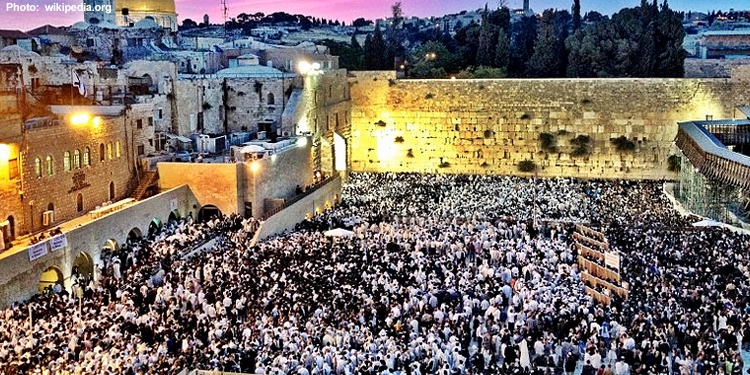
Located in the heart of the Old City of Jerusalem, the Western Wall is one of the most sacred places on earth to millions of people of faith. Also referred to as the Kotel — its name in Hebrew — it is a place of prayer, contemplation, and worship for Jews and Christians alike, and one of the most popular destinations for tourists and pilgrims coming to the Holy Land.
What Is the Western Wall?
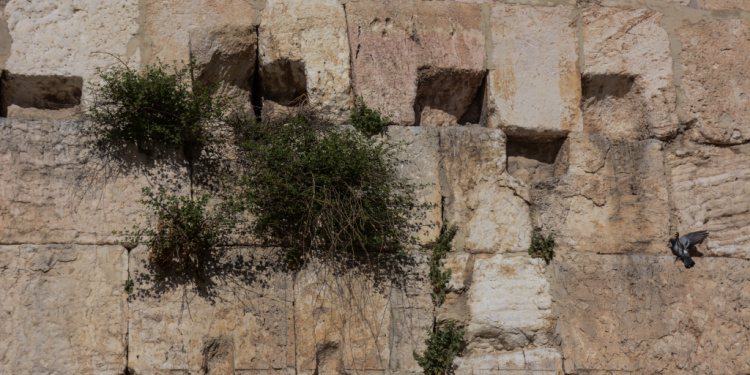
Photo credit: Debbie Cooper
While many people assume that the Western Wall was once part of the ancient Holy Temple itself, it is actually the remnant of a retaining wall built by King Herod to support the expansion of the Second Temple complex in the first century. That being said, other than the Temple Mount itself, it is the closest remaining location to the former site of the Holy of Holies, the inner sanctuary within the Temple that housed the Ark of the Covenant and where the focal point of the Temple service was held.
The Western Wall was the closest the Jewish people could get to the Temple Mount for thousands of years, as this site was completely inaccessible to Jews. For that reason, the Western Wall has been the focus of prayer and pilgrimage throughout history for Jews and Gentiles alike. Wherever the Jewish people were scattered around the world throughout their long exile from the Holy Land, their hearts and prayers were always directed toward the Western Wall, believed to be the “Gate to Heaven” for all prayers.
The Biblical Significance of the Western Wall
According to Jewish tradition, Mount Moriah, the location of the First and Second Temples, and home to the Western Wall, is sacred not only because of what has unfolded here throughout history, but because the location was handpicked by God Himself.
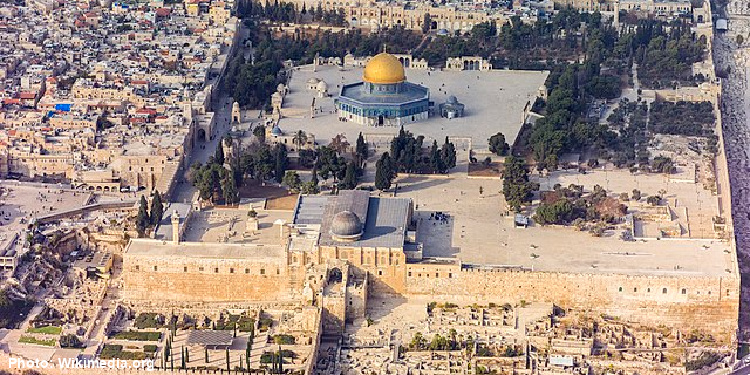
Photo credit: Oleg Moro | Wikimedia
According to Jewish tradition, God Himself chose Mount Moriah to be the site of the Holy Temple. As the Bible says in 2 Chronicles 7:15-16, “Now my eyes will be open and my ears attentive to the prayers offered in this place. I have chosen and consecrated this temple so that my Name may be there forever. My eyes and my heart will always be there.”
From the dedication of King Solomon’s Temple in the 10th century BCE, these powerful words teach us that while God surely watches over people no matter where they are, the prayers offered up from Mount Moriah have a special place in His heart, whether or not the Temple stands. Seventy years after the destruction of the First Temple, the Second Temple was also built on this site, and it is believed that the future Third Temple will ultimately be built here in messianic times.
However, according to the Jewish sages, God consecrated this site as holy long before King Solomon built the Temple there. In fact, according to tradition, the entire world was created from “the Foundation Stone” on Mount Moriah, the place where the physical and spiritual realms meet. It is also believed that this was the site of the binding of Isaac, the ultimate story of sacrifice and dedication to God. As God instructed Abraham in Genesis 22:2, “Take your son, your only son, whom you love—Isaac—and go to the region of Moriah. Sacrifice him there as a burnt offering on a mountain I will show you.”
The History of the Kotel
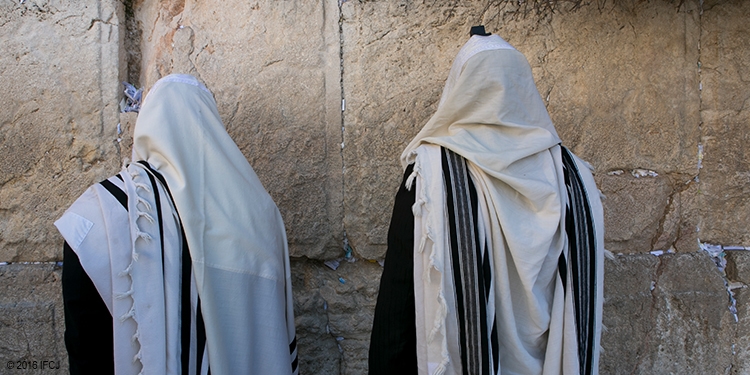
Photo credit: IFCJ
While the Western Wall has deep spiritual significance, it has also played an important role in the politics of the region throughout history. Three thousand years ago, King David purchased Mount Moriah from the Jebusites and declared Jerusalem the capital of his kingdom. His son, King Solomon, built the First Temple on this site, which would serve as the home of the Holy Ark and the gathering place of the entire Jewish nation three times a year on the pilgrimage festivals of Pesach (Passover), Shavuot (Pentecost), and Sukkot (Feast of the Tabernacles).
When the First Temple was destroyed by the Babylonians in 586 BCE, the Jewish people were sent into exile. However, they always yearned to return to the Holy City. As Psalm 137:1-4 says, “By the rivers of Babylon we sat and wept when we remembered Zion. There on the poplars we hung our harps, for there our captors asked us for songs, our tormentors demanded songs of joy; they said, ‘Sing us one of the songs of Zion!’ How can we sing the songs of the LORD while in a foreign land?”
Seventy years later, their prayers were answered, and the Jewish people were given permission by the Persians to return to Jerusalem and rebuild the Temple. The Second Temple was later expanded and beautified by King Herod. The responsibility of constructing the Temple was divided among different sectors of society, and the building of the Western Wall, an external supporting wall to the larger complex, was the responsibility of the poor. They could not afford to hire laborers to build on their behalf, so they poured their blood, sweat, and tears into the construction of this wall, the only one still standing today.
A Symbol of Hope
Over the course of the long and tumultuous history of the Holy City, Jerusalem has been conquered, destroyed, and rebuilt nine times by some of the greatest empires that ever existed, including the Babylonians who destroyed the First Temple and the Romans who destroyed the Second Temple. During these wars, as well as the Bar Kochba Revolt against the Roman Empire and the Maccabees’ war against the Greek Empire, Jewish soldiers fought for the sacred stones of their Holy Temple until their last breaths.
However, the sages prophesied that even when the Temple was destroyed, the Western Wall would always remain standing. Each time the Jewish people were exiled from their land, they cried for Jerusalem and vowed to return, always directing their prayers to the Western Wall, a symbol of hope after destruction and God’s eternal covenant with the Jewish people.
After 2,000 years of exile, the Jewish people finally returned home to the Holy Land and established the modern State of Israel in 1948, declaring Jerusalem as the eternal capital. However, when the ceasefire lines were drawn following the War of Independence of 1948, Jerusalem was divided, and the Jewish people were, once again, unable to reach the Western Wall.
The Six-Day War of 1967
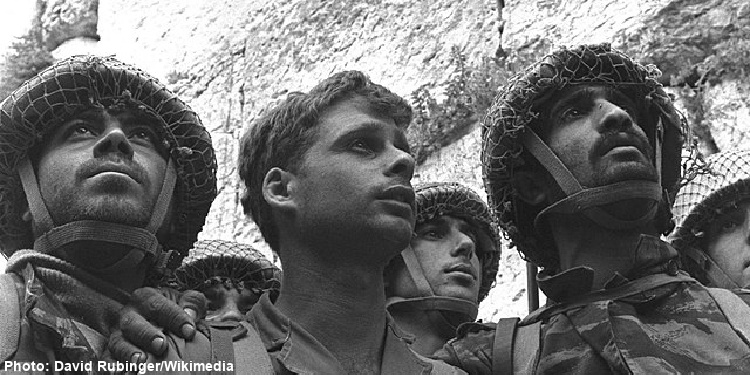
Photo credit: David Rubinger/GPO
In 1967, in what many consider the single greatest open miracle since biblical times, Israel was forced into a war that it neither wanted nor thought could be won – at least not without extremely heavy casualties. But miraculously, Israel did win the Six-Day War, and in doing so, liberated Jerusalem, which had been occupied by Jordan for the previous 19 years. The most amazing moments of that war were caught on radio. Commander Motta Gur reached the Temple Mount and spoke those famous words that echoed around the world: “The Temple Mount is in our hands! I repeat: The Temple Mount is in our hands!”
For the first time in two millennia, Jewish sovereignty had been asserted over Judaism’s holiest site.
And then perhaps one of the greatest mistakes in Israel’s modern history was made. General Moshe Dayan, with the best of intentions and wanting to be kind to our neighbors and maintain freedom of worship for all people, allowed the Palestinians to maintain a degree of control over the Temple Mount. They have full freedom and rights to the Al-Aqsa Mosque and the Dome of the Rock, which sit directly over the remains of the First and Second Temples. Essentially, they control the Temple Mount. Meanwhile, while Israel still retains rights to this area, current law does not permit any non-Muslims to pray on the Temple Mount. That means that if a Jew is lucky enough to obtain permission to ascend the Mount, he or she may not worship our God in any way at our holiest site. Muttering just one prayer can result in arrest by police.
The Focal Point of Jewish Prayer
Throughout Jewish history, the Western Wall and the site of the Holy Temples has been the focal point of Jewish prayer, regardless of whether or not the Temples were standing. Jewish ritual, liturgy, and poetry from every point of history are full of references to Jerusalem.
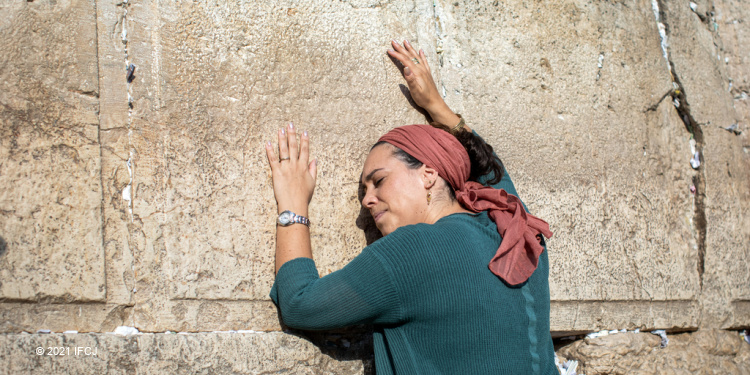
Photo credit: Avishag Shaar-Yashuv
No matter where they are in the world, three times a day, the Jewish people pray for the return to Jerusalem and the rebuilding of the Temple. The Jewish people always pray facing Jerusalem, and those located within Jerusalem direct their hearts toward the Western Wall and the Temple Mount.
At many special points throughout the Hebrew calendar, the Jewish people focus on Jerusalem. The Passover seder concludes with a prayer for the rebuilding of Jerusalem, the Yom Kippur fast draws to a close with a prayer for the rebuilding of Jerusalem, and Tisha B’Av, the fast day of the Ninth of Av, is a full day dedicated to weeping for the destruction of Jerusalem and praying for the coming of the messiah.
At every Jewish wedding, the groom breaks a glass to commemorate the destruction of Jerusalem, reciting one of the most famous verses in Jewish tradition, written by King David: “If I forget you, Jerusalem, may my right hand forget its skill. May my tongue cling to the roof of my mouth if I do not remember you, if I do not consider Jerusalem my highest joy” (Psalm 137: 5-6).
From biblical times through exile and up until today, Jewish people around the world were willing to sacrifice all they had to travel to the Temple — or the Western Wall — to gather, worship, and bask in God’s divine light on earth.
Gentiles and the Western Wall
The Western Wall has always been a place of worship for people of all faiths who have traveled far and wide to seek God’s presence. When dedicating the First Temple, King Solomon asked God to accept the prayers of all people who would come to worship: “As for the foreigner who does not belong to your people Israel but has come from a distant land because of your great name and your mighty hand and your outstretched arm—when they come and pray toward this temple, then hear from heaven, your dwelling place. Do whatever the foreigner asks of you, so that all the peoples of the earth may know your name and fear you, as do your own people Israel, and may know that this house I have built bears your Name” (1 Kings 8:41-43).
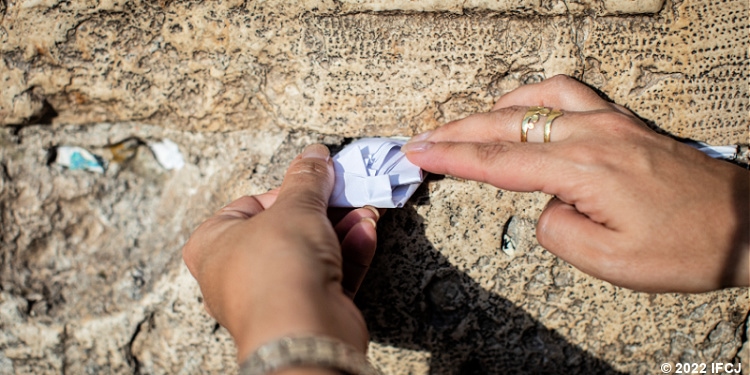
Photo credit: IFCJ 2022
Both Jews and non-Jews would travel to Jerusalem to bring offerings to God during the pilgrimage festivals, and Isaiah prophesied that the Third Temple will be known as a “house of prayer for all nations” (Isaiah 56:7). No matter where you are in the world, your prayers are welcomed at the Western Wall, and every year, The Fellowship takes the prayers of its Christian friends and donors to the Western Wall.
We invite you to send a prayer to the Western Wall.
The Western Wall Today
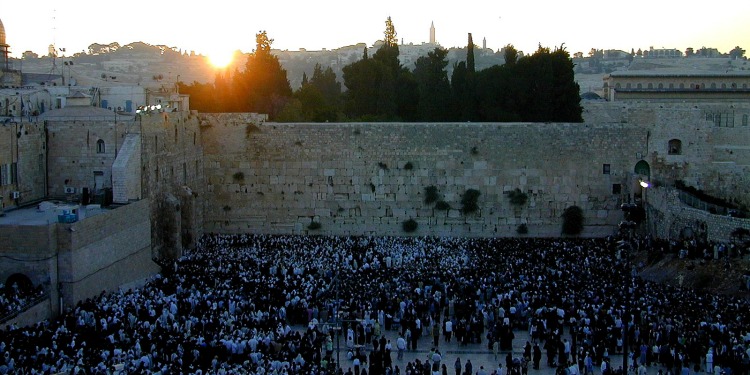
Photo credit: Bibleplaces.com
Today, the Western Wall is still recognized as a symbol of prayer and spirituality for people of all faiths. There are many Jewish prayer services held at the Western Wall every day, as well as special holiday prayer services, such as the Priestly Blessing ceremony, when tens of thousands of people gather at the Western Wall during Passover and the Festival of Tabernacles (Sukkot) to be blessed by those who trace their lineage to the tribe of the biblical priests, the tribe of Levi.
There is a custom for a bride and groom to pray at the Western Wall on their wedding day, and many families choose to celebrate their children’s bar and bat mitzvah ceremonies at the Western Wall, including reading from the Torah and putting on tefillin for the first time. There is also a mystical belief that if a person prays for one specific thing at the Western Wall for forty days straight, whether it be a spouse, a child, or healing, their prayers will be granted.
The Western Wall is one of the most popular tourist destinations in Israel, if not the world, attracting pilgrims, diplomats, and celebrities who come to pray and experience the palpable spiritual atmosphere of this sacred site. Many people have the tradition to write their own private prayers on small notes and place them into the cracks in the ancient stones of the Western Wall. More than one million prayers are placed in the Western Wall each year, and they are cleared out twice a year and buried in the Mount of Olives cemetery in Jerusalem.
The Western Wall has always been and will always be a place of unparalleled spiritual, religious, cultural, and historical importance to the Jewish people, as well as a place for each and every individual to connect to God, regardless of his or her faith.
More Resources About the Western Wall
Test Your Knowledge on the Western Wall with our quiz!
